France is the most visited countries in the world, you can be sure there are plenty of landmarks that quench the appetite of all those people that flock into the country from all corners of the world. The centerpiece of the country, without a doubt, is Paris, a city known for world-class museums, buzzing nightlife, and architecture. But there are a lot of actions outside the capital, with France borders punctuated with beautiful small towns, mountains, and villages.
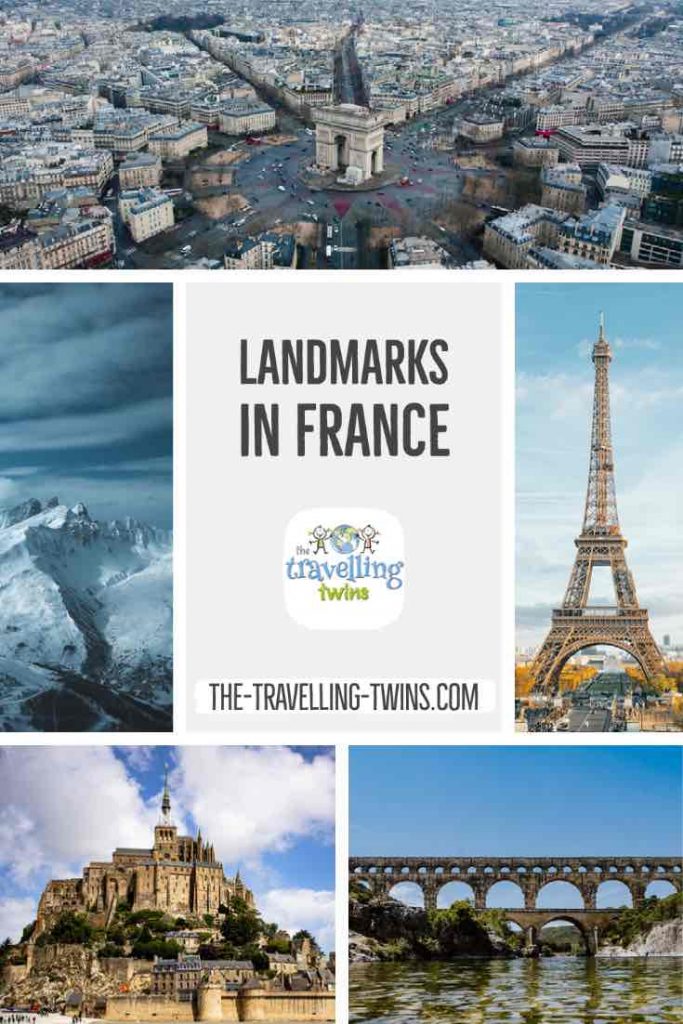
My family have visited France and traverse across its countryside on many occasions and come across many historical, both natural and manmade landmarks, and so, from the Eiffel Tower, the Louvre, and the Notre-Dame de Paris to Abbey of Fontenay and Mont Saint-Michel, here is the list of famous landmarks in France.
Landmarks in Paris
The Eiffel Tower
The Eiffel Tower doesn’t need an introduction. Located in the capital, La Tour d’Eiffel is one of the most popular landmarks in Europe and the world. For more than 100 years, the structure has been a powerful and unique symbol of the City of Lights, and by extension, the country. The Eiffel Tower impressed the whole world from the word go when it was first launched during the World Fair of 1889.
Its stature and daring design sent a strong message across the world of the French expertise and industrial know-how.
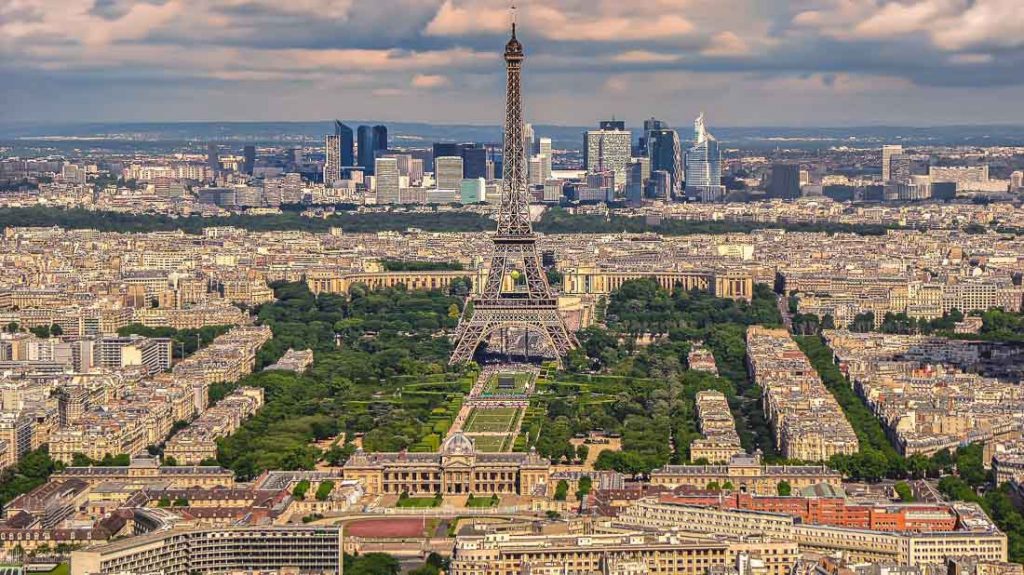
The tower is located by the Seine River and after the World Fair, it was supposed to be destroyed in 1909, but its popularity saved it.
Contrary to the misconception, the Eiffel Tower wasn’t designed by Gustave Eiffel; instead, it was created by Emile Nouguier and Maurice Koechlin.
For many years now, this Parisian monument has been the most visited paid landmark in the world.
Nicknamed the Iron Lady, the Eiffel Tower is constructed from latticed twisted iron and is repainted every 7 years, and stretches around 6 inches taller in the summer. Currently, it is the tallest building in Paris, and judging from the European dislike for tall structures, it is likely to hold that title for many years to come.
Arc de Triomphe
This iconic structure is more than just a landmark. Having been commissioned in 1806 by Emperor Napoleon, and designed by architect Jean Chalgrin, the Arch de Triomphe stands at the intersection of 12 avenues, thus forming an etoile or star shape.
The arc was built to honour those who fought and perished defending the country during the Napoleonic and French Revolutionary Wars. If you come close, you can see the names of all French soldiers and battles won inscribed on its outer and inner surfaces.
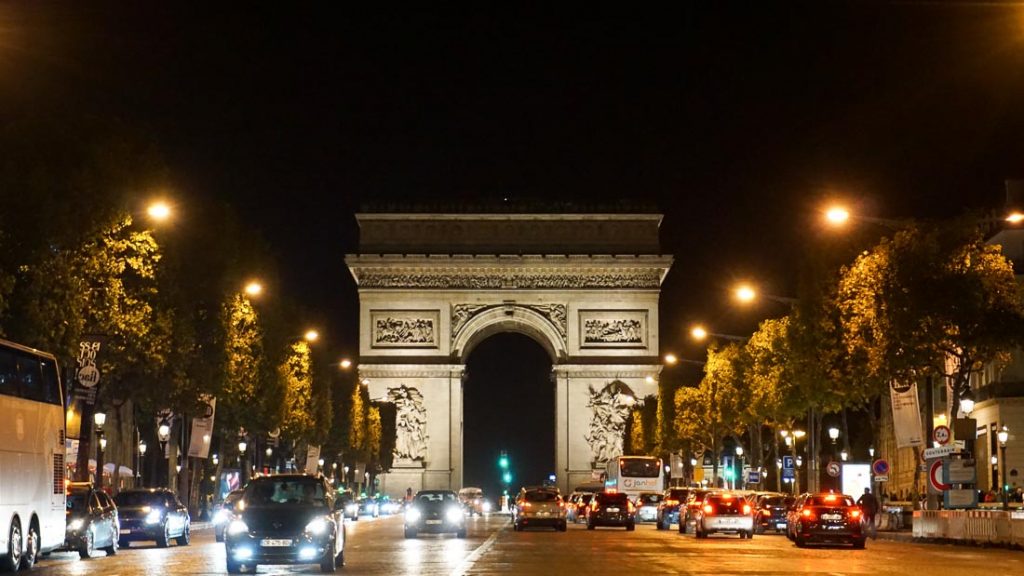
The most famous site however is the Tomb of the Unknown Soldier from World War I, lying beneath the vault of the structure.
Other than being a historically important and famous landmark, the Arc de Triomphe is also a popular spot for the new drivers to test their navigation skills.
It was built to resemble Rome’s Arch of Titus and used to be the tallest arch on the planet until 1938.
Aviator Charles Godefroy becomes the first person to fly through the arch in 1919, a feat that has since been achieved by other pilots in recent decades.
The eternal flame was lit in 1923 by Andre Maginot and has been burning ever since. The flame is usually rekindled each by war veterans at 6.30 pm.
One of the most noticeable features is the giant French flag that hangs from the arch, which you can see from miles away.
Louvre Museum
The most visited museum in the world, the largest museum in the world – those are just a few titles that the Louvre Museum holds. This building is more than just a gallery space; it is an architectural wonder and inside you will find an incredible collection of work of art from France and international, including Egyptian antiquities and Islamic arts. But the most famous artwork in the museum is the Mona Lisa by Leonardo da Vinci, which usually draws large numbers of visitors every year. The painting is just 21 by 30 inches and is enclosed in bullet-proof glass and fringed by guards. This tight security is the result of the 1911 incident when the iconic painting was stolen and recovered two years later.
As the most visited museum on the planet, I would recommend that you buy tickets in advance as they tend to sell like hotcakes.
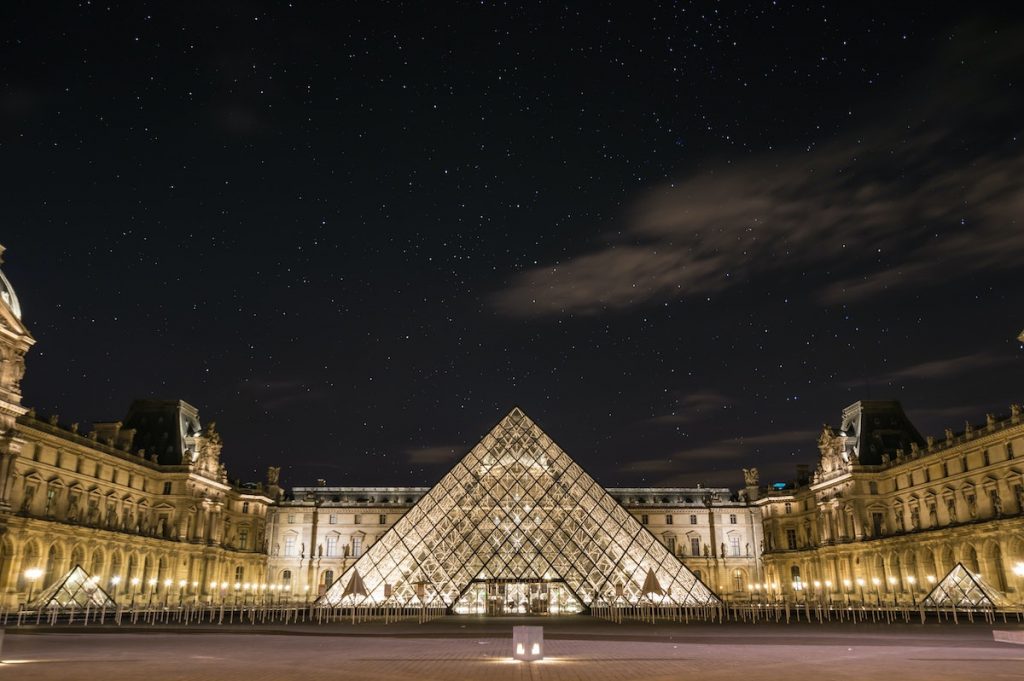
The Louvre was initially built as a castle in 12th century (1190) before it was rebuilt in the 16th century as a royal residence. And while its art collection is the most talked-about aspect, the building architecture can be an amazing exhibit. The style of the construction is predominantly French Classical and Renaissance though the traces of medieval features from the old castle can be seen beneath the famous pyramid.
But the most famous impressive part of the building is Claude Perrault’s Colonnade on the eastern façade. The part was constructed in the 17th century in the French Classical style. It features two Corinthian columns at the corner of the frontage. In fact, this style has inspired numerous buildings around the world including the Metropolitan Museum and the Capitol building in New York.
The pyramid, which was inaugurated in 1988, is also one of the most distinguished elements of the museum’s design, helping blend modernity and traditional style.
Notre Dame de Paris
For those who enjoy religious landmarks, you will appreciate that France has a number of them within its borders. Not to be confused with the Cathedrale Notre Dame de Strasbourg, Notre Dame de Paris is located in the french capital while the other Notre Dame is located in Strasbourg, a town near the French-German border.
Notre Dame was completed in the 14th century, making it slightly over 850 years old today. It is one of the most famous landmarks in the world, not just France, having been a mainstay in Paris’s skyline for centuries, despite numerous challenges. Its ability to endure hardship, however, was severely tested in early 2019 when a massive fire broke out, causing its iconic spire to collapse.
The church is located on the small island in the center of the River Seine called the Ile de la Cite and was constructed on the remnants of two other churches. It was commissioned by the bishop of Paris, Maurice de Sully, who conceived the idea for converting two ruins of basilicas into a single, larger building. The foundation was laid in 1163 by Pope Alexander II while the high altar was sanctified in 1189.
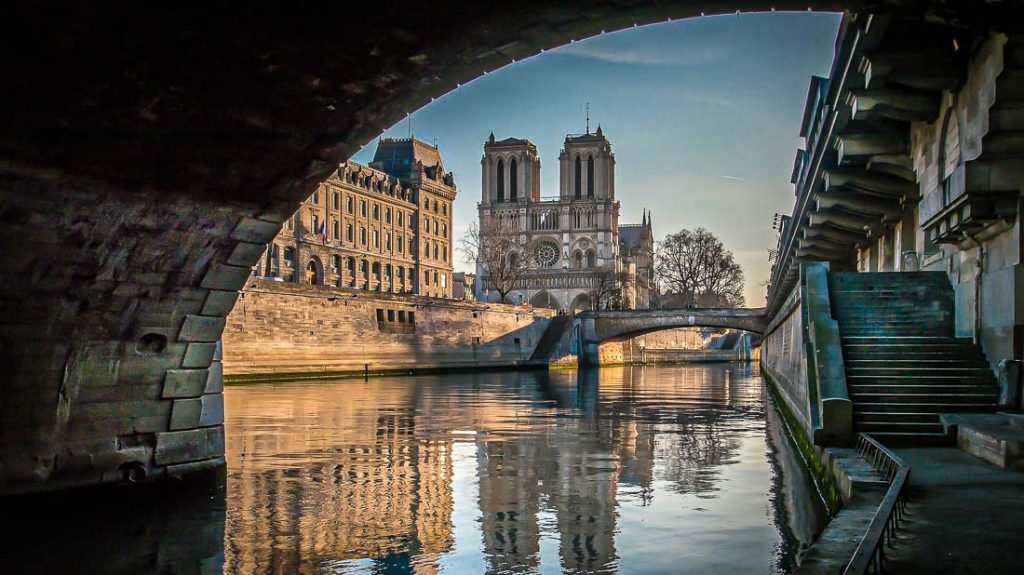
Its famous western façade, known as the choir, was completed in 1250 while the chapels, porches, and other add-ons were included in the next hundred years.
Notre Dame comprises of an apse and a choir, a nave fringed by square chapels and double aisles, and a short transept. Its spire was included in the 19th century after the original one was removed due to safety purposes. This was during the time when the church was put under some serious restorations under architect Eugene-Emmanuel Viollet-le-Duc, with inspiration from the popular novel Notre-Dame de Paris (1831) by Victor Hugo.
After the 2019 fire, there are numerous proposals from architects calling the cathedral to rebuild with a modern glass spire, a rooftop garden, as well as other modern embellishments, but the French officials decided to restore it the way it was before the fire.
Sainte-Chapelle
Also located on the island of Île de la Cité on the Seine like Notre Dame Cathedral, the Sainte-Chapelle was commissioned by King Louis IX in the 13th century as part of the former Palais de la Cite. The chapel is constructed in Gothic Rayonnant style and was once home to the most exclusive vestiges of Christianity.
This landmark is one of the many testaments of French’s architectural know-how thanks to its 15 large windows displaying a thousand scenes from the bible (both new and old testament) as well as a spiral staircase.
Saint-Chapelle was damaged during the French Revolution but was restored immediately, although some parts were not possible to replicate, including the colorful vivid colors that decorated its walls.
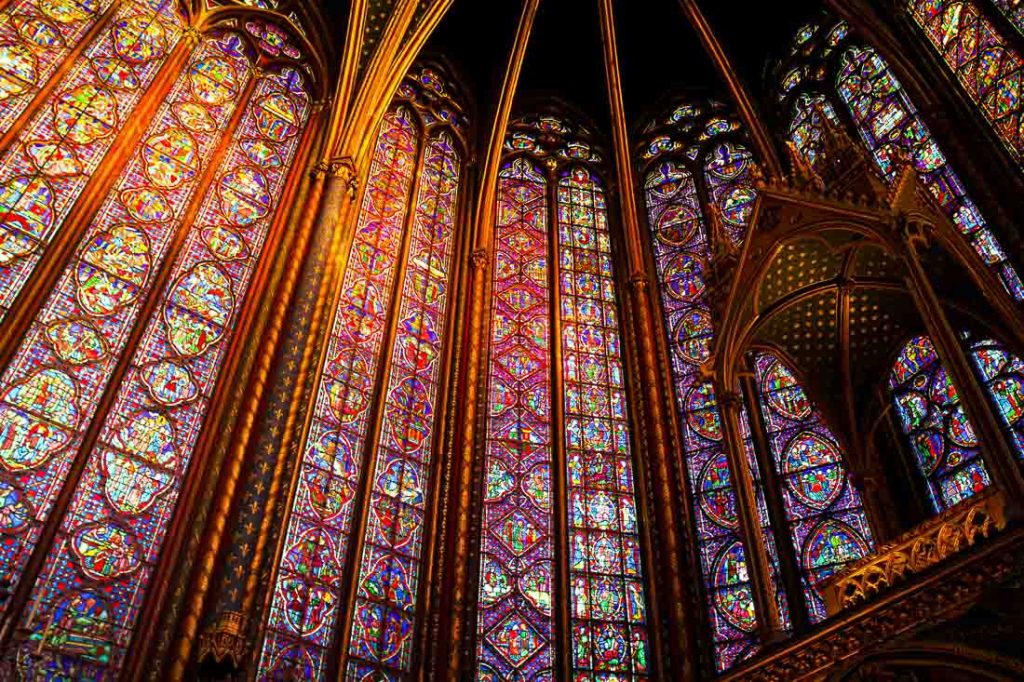
Palace of Versailles, Paris
Located just outside Paris, the Palace of Versailles (Château de Versailles ) is one of the most impressive architectural landmarks in France that the French built to send a statement around Europe. It was constructed in the 17th century for the Sun King Louis XIV and served as the capital of French politics up until the start of the French Revolution.
Though the palace and its grounds are all magnificent, the Hall of Mirrors is the most famous and popular part of the complex, thanks to its 21 mirrors and stretching 73 meters long.
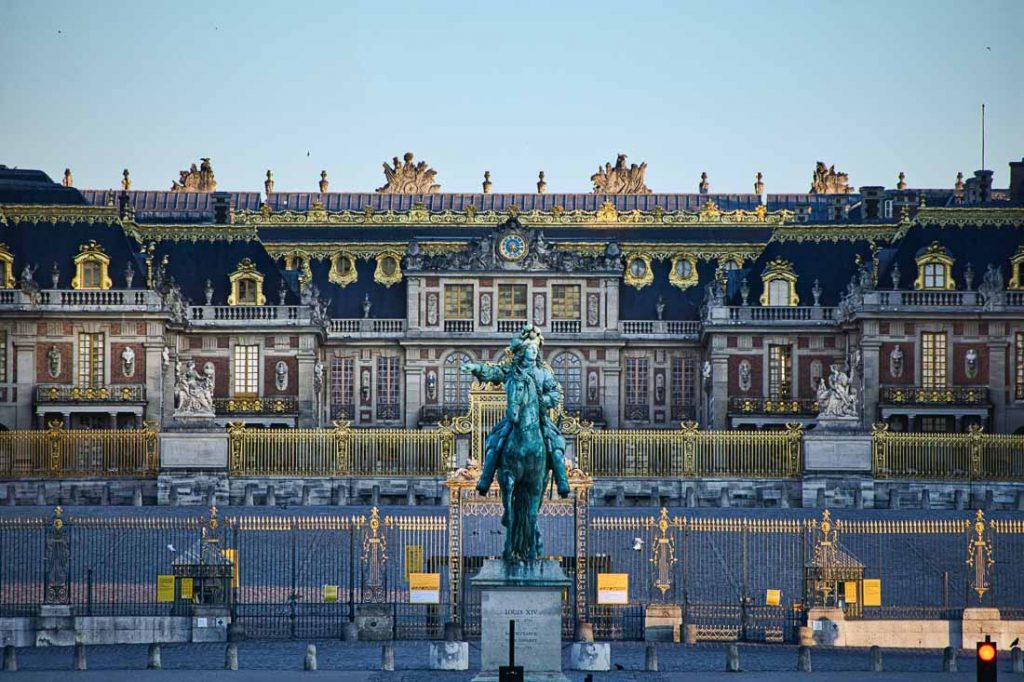
Sitting on 2,014 acres, the Palace of Versailles is the largest royal domain in the world. There are a total of 50 fountains around the grounds of the palace, and mind-blowing 620 jets.
Other points of interest include the Petit Trianon and Grand Trianon – two minor palaces as well as Hameau de la Reine, a small villa dedicated to Marie Antoinette.
Manmade Landmark in France
Mont St Michel Normandy
Perched atop a rocky island amongst swaths of sandbanks and exposed to some of the harshest tides in Europe, Mont St Michel in Normandy is also one of the most popular landmarks in France. It was constructed between the 11th and 16th centuries after Richard II, Duke of Normandy approached William of Volpiano to be the contractor.
With approximately 2.5 annual visitors, Mont Saint Michel is one of the most visited sites in France. It is also a UNESCO World Heritage Site.
It can be an island or mainland depending on the tides, thus it is important to check the tidal calendar first before visiting. Accessing the site is free, but there is an entrance fee for visiting Mont Saint Michel Abbey. The walls of the Abbey are so strong that the English were unable to conquer the island despite repeated assaults.
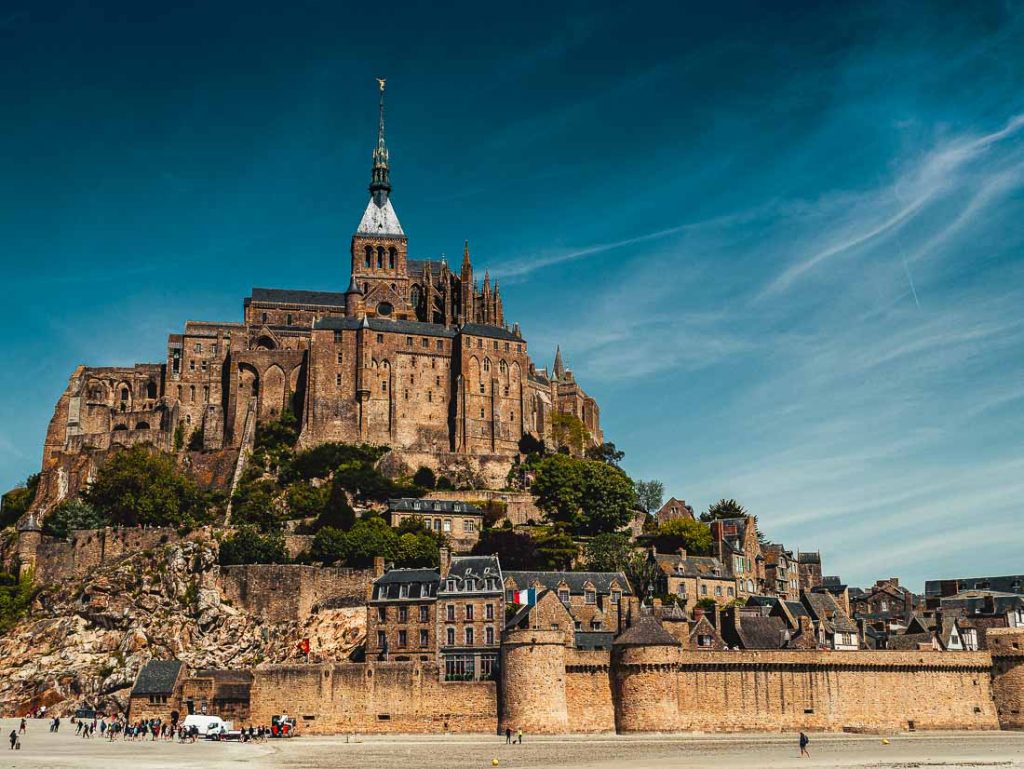
The original abbey was partly burnt down during the numerous wars and was rebuilt into a Gothic structure in the 13th century. Today the abbey comprises two wings, though it was intended to be three – one is the church-abbey and the second is called La Merveille or The Wonder, and it is home to the monks.
At some point in history, precisely during the French Revolution, the abbey served as a prison, and in the 19th century, it was officially transformed into a French monument.
Cathedrale Notre Dame, Strasbourg
An architectural masterpiece, the Notre Dame Cathedral has truly stood the test of time and adversities. The first structure was constructed in 1015 but was razed down by the fire, leading to a new building being constructed in the 12th century. It is during the second construction that the church got its Gothic architectural style that we know and admire today.
The construction of this famous French landmark was completed in 1439. If you climb its steps to the top, you will experience a mesmeric view of over the beautiful city of Strasbourg.
It is gigantic that you can actually see it across the prairies of Alsace as well as the Vosges Mountains and the Black Forest in southwest Germany.
The cathedral’s pinkish color is attributed to the sandstone used in its construction from the Vosges Mountains. Its interior is also as impressive as its exterior, thanks to the colored glass window and giant adorned organ.
Legend has it that there are numerous enigmas and secret codes hidden inside the ornaments.
Pont du Gard
Built by the Romans between 40 AD and 60 AD, Pont du Gard is the most visited landmark in France from prehistoric times. Located near Vers Pont du Gard, the aqueduct was constructed to help supply water to the Roman village of Nemausus (currently Nimes) from a nearby spring.
During its heydays, the viaduct would deliver around 35,000 cubic meters of water to the settlement daily.
Stretching some 59 kilometers, this bridge was built by more than 1,000 workers at a total cost of approximately 30 million sesterces. It was constructed using lax yellow sandstone blocks from a quarry nearby. The highest point of the bridge is built from breeze blocks joined with a motor, and it is capped by a device engineered to support the water channel.
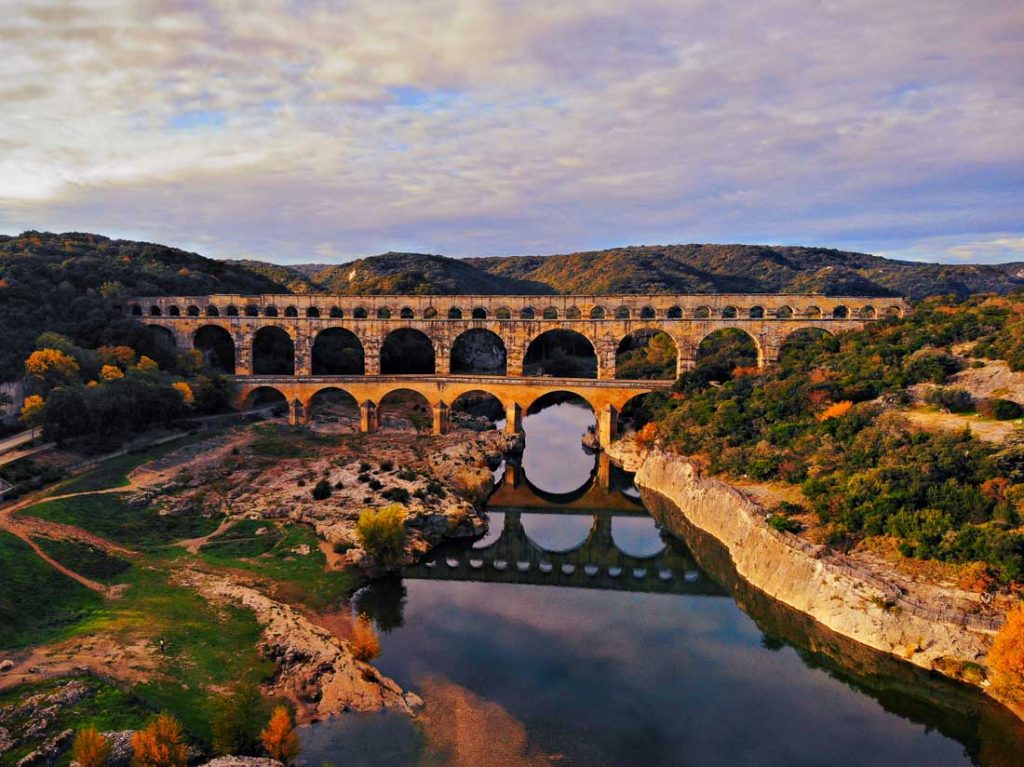
By building this three-story bridge, the Roman architects created a work of art that stood the test of time.
Numerous scientific studies have been conducted about the viaduct to reveal the volume of rock that was used in construction as well as how impressive and well-organized the construction process was. Archaeologists discovered numbering on the stones as well as points of support for scaffolding and a sign of hoists.
Carcassonne City
Featuring three kilometers of defensive fortifications, this World Heritage Site is one of the largest still-standing medieval walled cities in Europe. The city has been occupied before even the Roman times and served as an important location for the Romans before it was taken over by the Visigoth King Theodoric II in the 5th century.
The city was repaired in the 19th century by one Eugene Viollet-le-Duc.
Its points of attractions include the 52 medieval towers, cobbled streets, and Gothic Basilica. The inner parts of the city date back from the 3rd century while the outer parts dating back from the 13th century.
Entrance to the walled city is free, but there is a small fee for car parks near the old city. The stone streets are fringed by restaurants and boutiques. Visitors can access the city’s ramparts and enjoy the amazing views of over the new town the mountains to the north, and the nearby countryside.
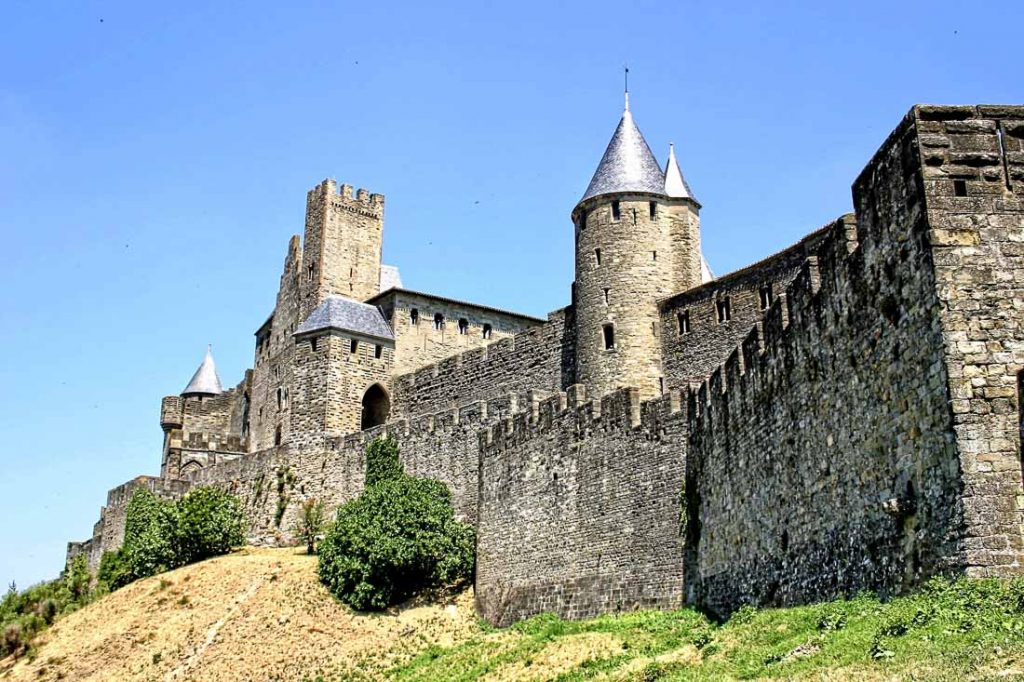
One of the must-see attractions in Carcassonne is its two main gates, the Aude gate, which is located below the chateau and to the west, and the Narbonne gate on the eastern side. Both gates have been significantly reinstated in recent years.
Viaduct Millau
The Viaduct Millau is a french landmark, which was built in the 1980s. It spans the valley of the River Tarn near its source, close to the town of Millau in southern France. The bridge reaches 343 meters (1,125 ft) and is one of only three bridges in the world to cross both high valleys and high mountains at altitudes above 1000 meters. The design by architect Norman Foster won several international prizes for its innovative structural solution.
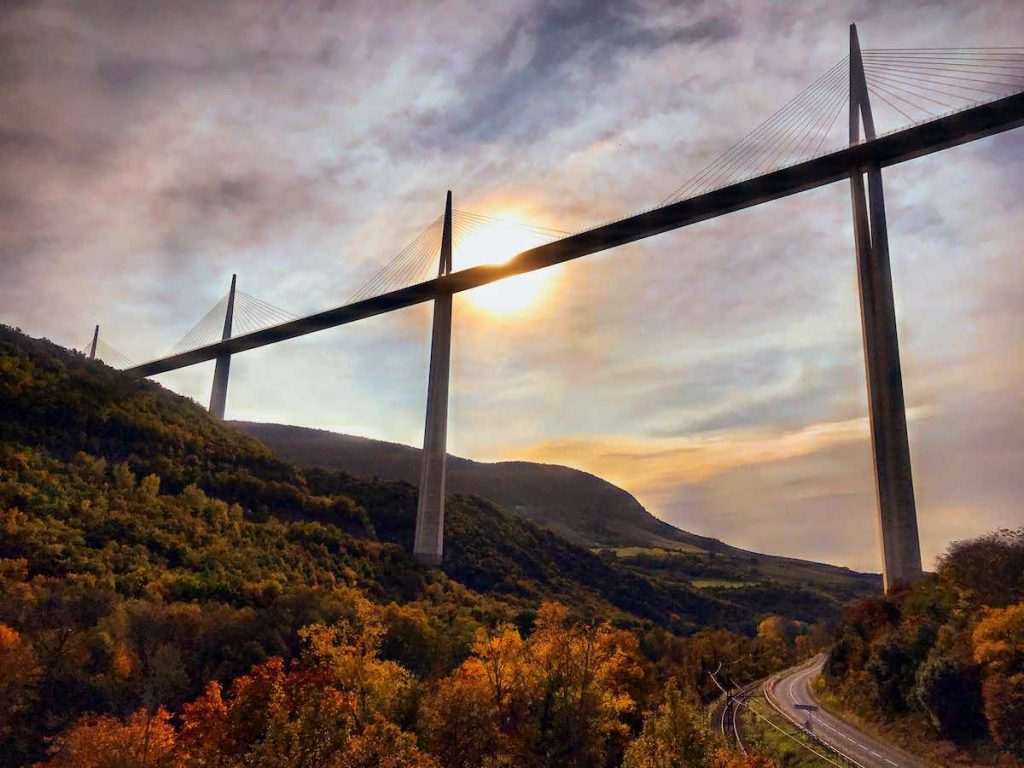
Natural landmarks in France
It not just manmade landmarks that define France, there are more to the country than the elegant architecture and historic monument. Despite being one of the most beautiful countries in the world, France’s natural landmarks usually get far less attention compared to manmade structures.
Etretat Cliffs
Located near a small town in Normandy, these magical cliffs feature a resort beach that has been for many years popular amongst writers, painters, and artists, including the likes of Maupassant, Monet, Lupin, Boudin, and Courbet.
These are not your normal cliffs, with some of its features including three natural arcs and the serrated ‘needle’ that protrudes separated from the waters of the Atlantic Ocean.
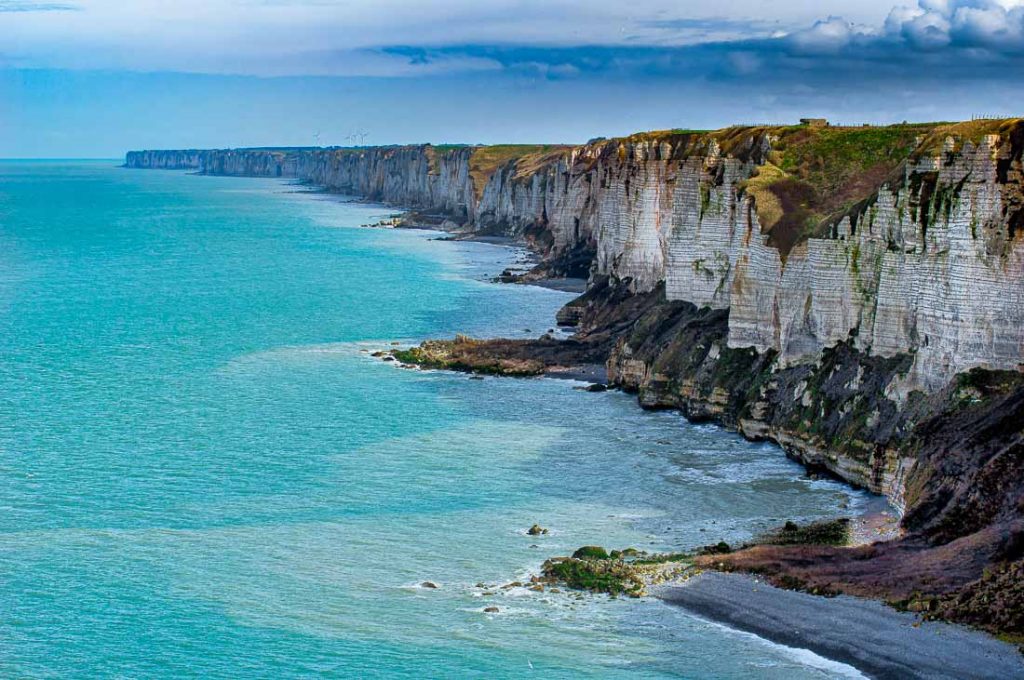
Covered almost completed in a blanket of evergreen grass and mosses, the cliffs’ sides comprise of white chalk.
The Etretat Cliffs offer a great and wonderful place to enjoy a day trip in northwestern France. If your trip is in summer, you can take a swim, sunbathe or both on the silver rock beaches.
Canal du Midi
Stretching 240 kilometers from Toulouse to the Mediterranean Sea, the Canal du Midi is a popular location for boating vacations, accounting for over one-fifth of French river tourism. While the original canal actually connects the Mediterranean to the Atlantic, Canal du Midi is usually a term used to describe the canal that was constructed from the city of Toulouse to the Mediterranean.
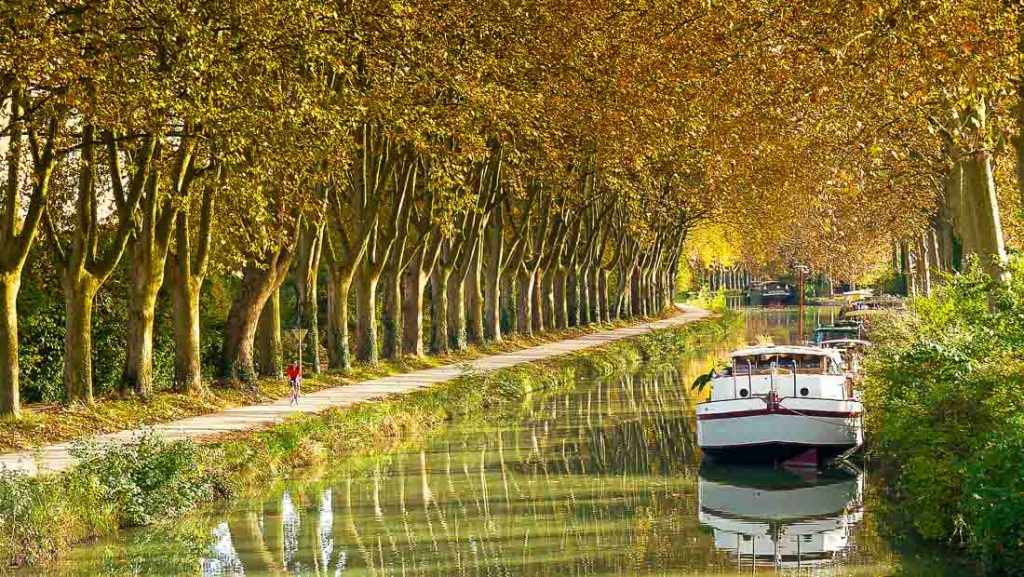
The canal passes through the breathtaking landscape of South France including several wine-growing countries as well as sunflowers and cornfields.
Camargue Salt Flats
The Camargue Salt Flats are the most peculiar natural landmarks you will ever come across. Tinged a supernatural shade of red and pink due to the mineral deposit in the lagoons, this is the largest river delta in the whole of Western Europe. Despite the mystical nature of the waters, there are arrays of wildlife that reside there.
Visitors can take a horseback ride tour at the region’s wild white horse stable.
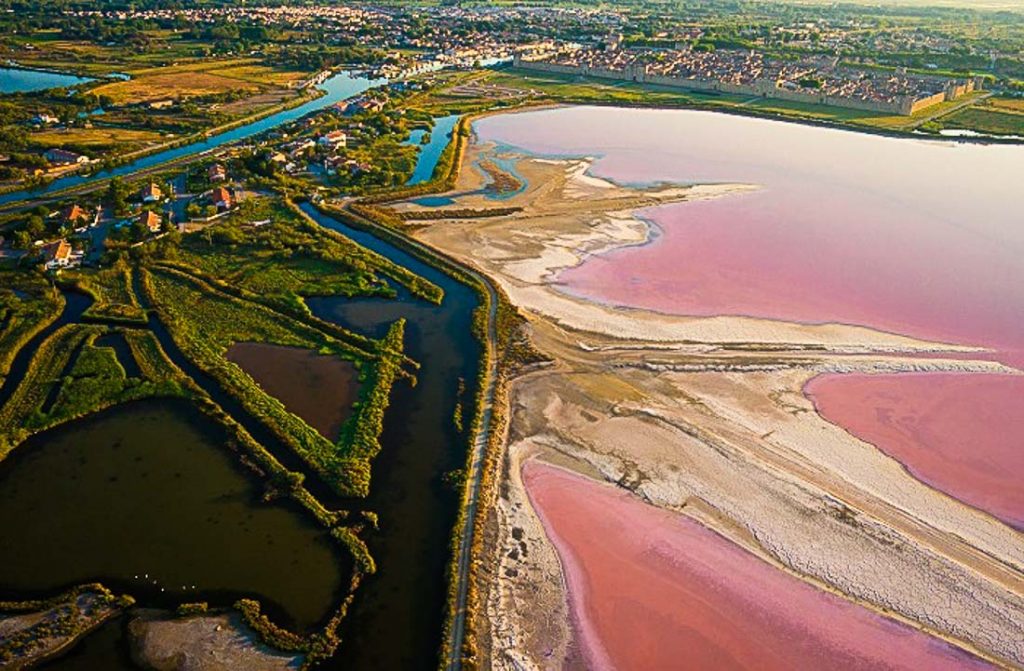
Lavender Fields
At the end of June, Provence’s landscape transforms into a spectacular field of violet flowers, most specifically the Valensole Plateau, which is well-stocked with lavender fields as well as almond trees, olive trees, and truffles.
However, while the above entries are all formed by nature, the bright purple rows of lavender fields are not.
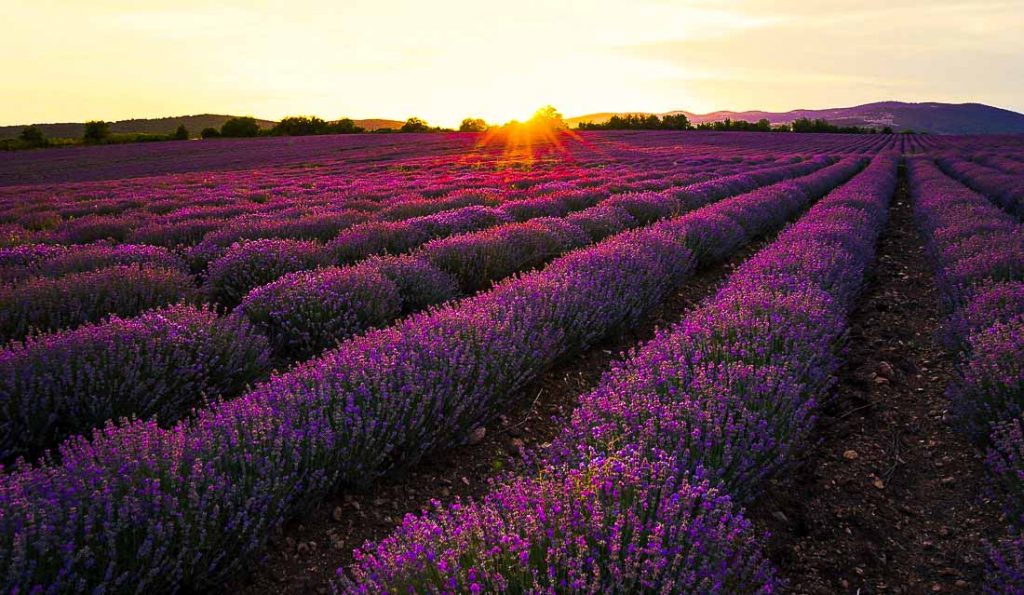
The mountains of Abbaye Notre Dame du Senanque are also among the most famous spots in Provence for this wonder. And they don’t just look good in the eyes, they also smell fantastic!
Pont d’Arc
Most commonly known for being the easiest gateway to the Ardeche Canyon on the other side of the divide, the Pont d’Arc loosely translates to “arc bridge” in French. The phenomenon occurred after many years or water erosion by the Ardeche River through the rock to form a hollow archway.
The spot is one of the most popular destinations in southern France for kayaking and canoeing.
The arc also serves as an entrance to the World Heritage Site Chauvet Cave, which houses some of the oldest cave paintings in the world, dating back over 30,000 years.
Gorges du Verdon
Running through the French Alps in the Aplse-de-Haute-Provence, Gorges du Verdon is a river valley stretching some 25 kilometers long and 700 meters deep. It is one of the most beautiful river ravines in Europe, attracting tourists all-year-round.
The water of the river is turquoise in color and along its walls and inside the water, you will find bits of glacial mineral deposits.
If you are a mountain climber, you will love this place, thanks largely to the fact that it is close to the Alps. Other fun activities that take place at and around Gorges du Verdon include canoeing, fly fishing, paragliding, and rafting.
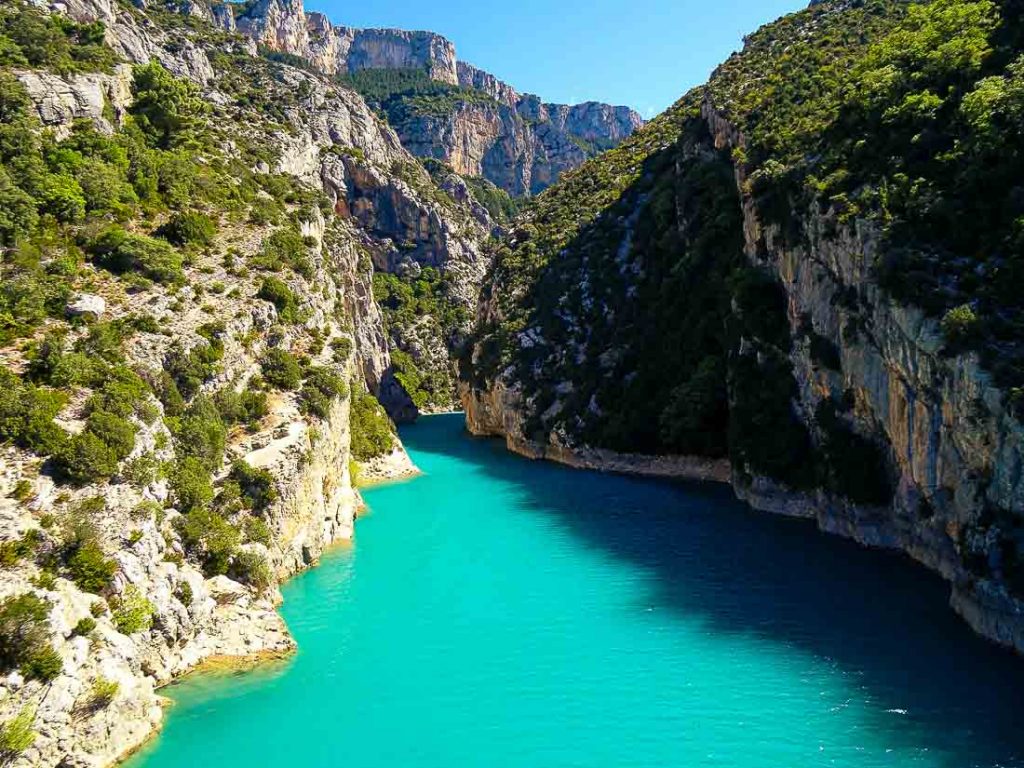
Mont Blanc
This is probably the most famous natural landmark in France. Mont Blanc, spanning the border between Italy and France along the Alps range is the tallest mountain in the whole of Western Europe, standing at 4,810 meters tall.
The first people to ascend this mountain was Dr. Michel-Gabriel Paccard and Jacques Balmat in 1786. Since then, 20,000 climbers make their way to the ice-covered peak every year, following the popular Gouter Route.
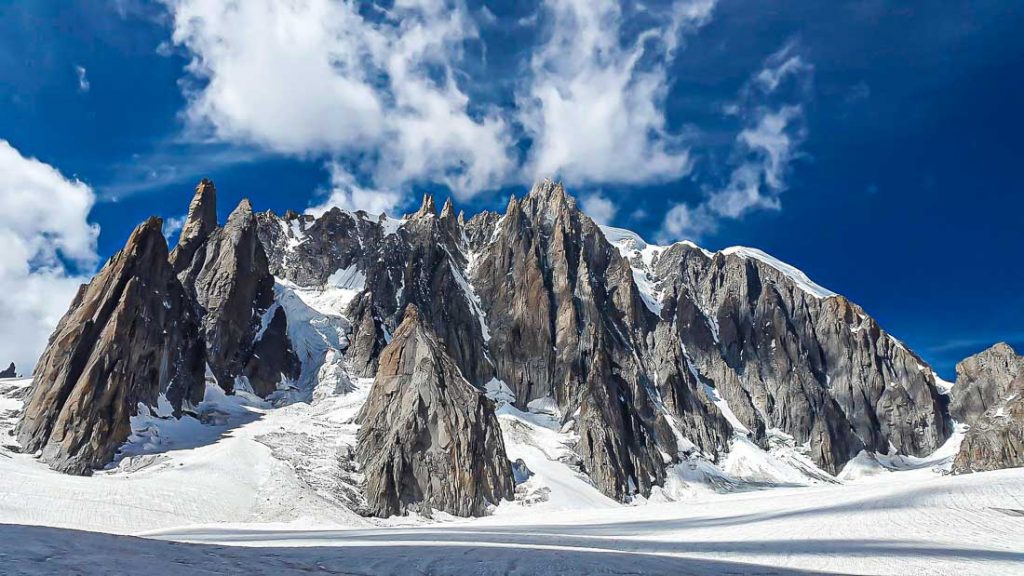
Pic du Midi d’Ossau
This beautiful mountain is located along the French Pyrenees Mountain range at the border between France and Spain. Pic du Midi d’Ossau emerges from the Ossau Valley and is famous for its pointy, rawboned shape with its reflection cast in the calm water below.
Visitors can climb the mountain or hike to the summit using the available routes. Up there, you will get to enjoy the views of the surrounding landscapes.
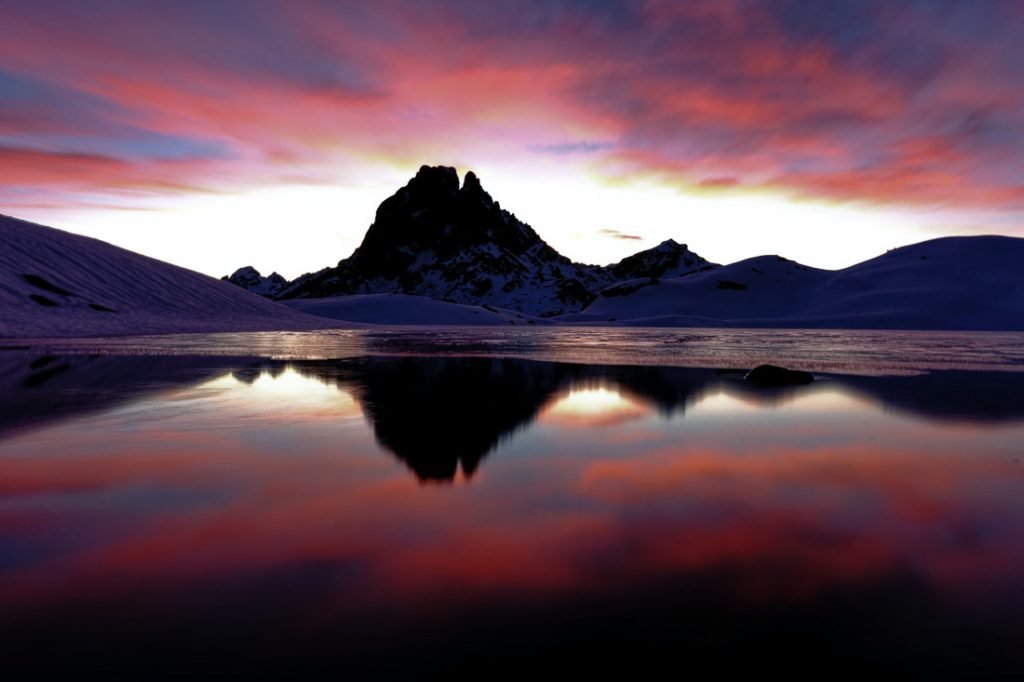
Cote de Granit Rose
Also known as Pink Granite Coast, this natural landmark is a stretch of shoreline located north of Britany. It stretches over thirty kilometers, starting from Plestin-les-Greves to Louannec. It has become popular among tourists due to its pink rock formation and sand. Apart from Cote de Granite Rose, the pink rock formations can only be found in Corsica and China.
Probably the best place to view these rocks is on the northern shore of Treguier, where the rocks are eroded to form some interesting shapes. This region also has some charming coastal chalets scattered between the rocks.
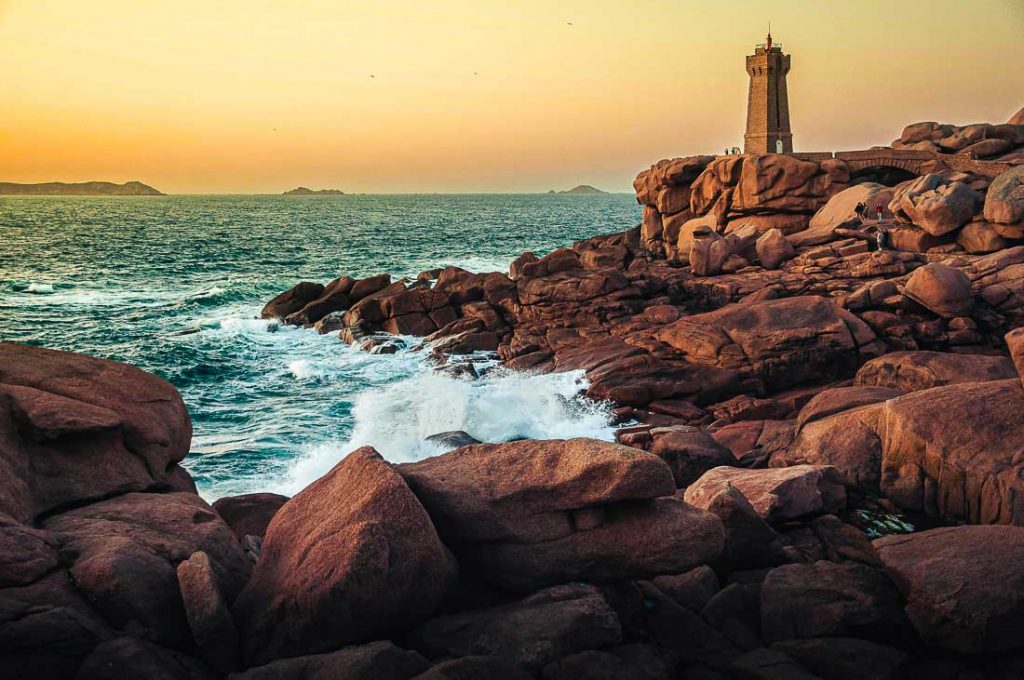
Aiguille du Dru
This peak is located in the Mont Blanc mountain range within the Alps. Its highest point is at 3,755 meters while the mountain itself is made of some striking granite rocks that are jagged at the peak.
Climbers have been ascending this mountain since the late 1800s and one even placed a metal sculpture of Our Lady of Lourdes at the top in 1913 that still stands to this day.
Gouffre De Proumeyssac
This sheer cave is known for its stalactites and stalagmites. Also known as the Crystal Cathedral, Gouffre De Proumeyssac is found in Aquitaine rural area and was discovered in 1907. A tunnel was constructed in 1956 to allow for easy access for visitors.
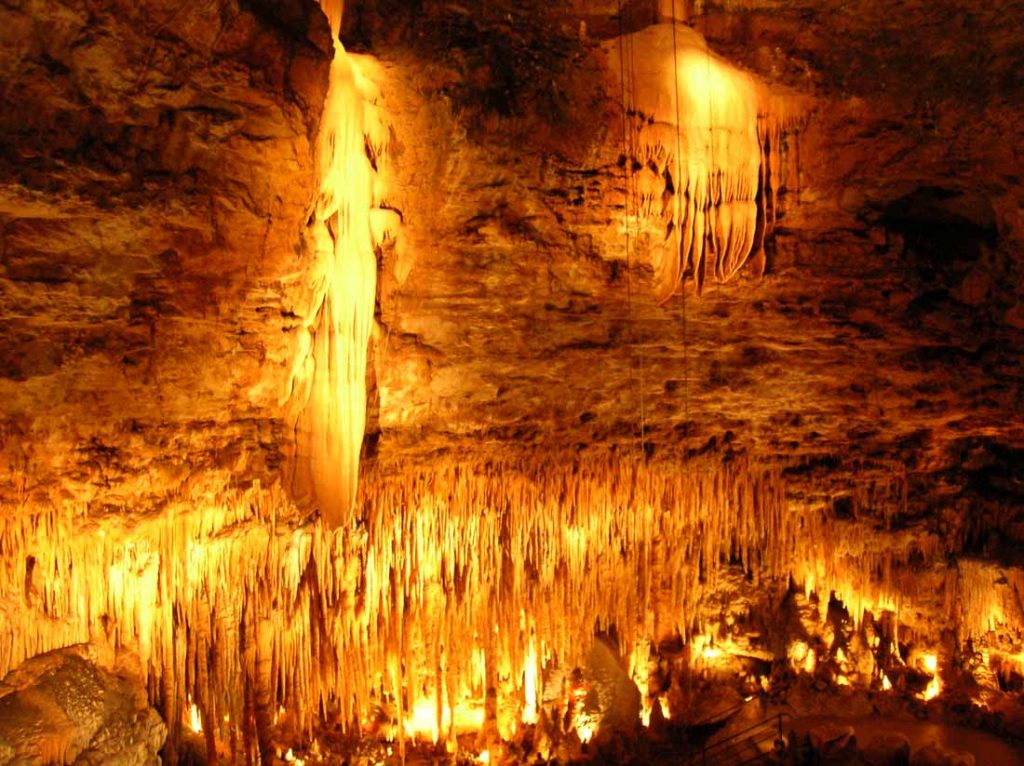
Aiguilles de Bavella
These are a group of seven jagged peaks in southern Corsica. The hills are referred to in English as the needles of Bavella. The highest of these mountains stands at around 1900 meters tall.
Below a pile of rock in these mountain peaks you will find a sculpture of the Virgin Mary called the Notre Dame des Neiges in French, meaning “Our Lady of the Snow”. There are also some other attractions here including cascades, unique rock formations, and a creek.
Scandola Nature Reserve
Located on the west shore of the island of Corsica, the Scandola Nature Reserve was launched in 1975 and is a Natural World Heritage Site since 1983. The reserve comprises two sectors, the peninsula of Scandola and the Elpa Nera inlet. The serrated and sheer cliffs feature a number of stacks and remote coves and islets including Tuara.
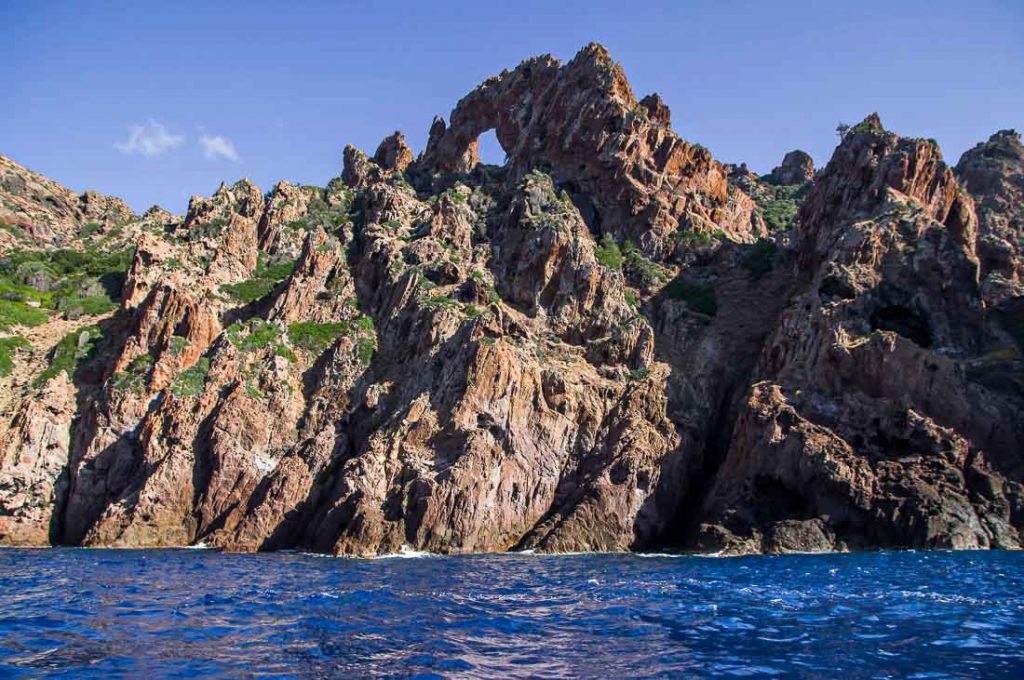
While you can get to the nature reserve on foot or by car, the best way to make it a worthwhile trip is to take a boat trip. You can catch a boat at the port of Porto in the Northwest of Corsica near Ajaccio. Boats depart from the harbor daily and the journey includes stopping at the small fishing village of Girolata, where you can get off and buy some food or just explore the village.
As I mentioned earlier, the reserve is divided into two and takes up a whopping 1,900 hectares – 1,000 hectares in the sea and 900 hectares on land. As a result, the reserve offers impressive landscapes shaped mostly by wind and water erosion.
France Landmarks – Pin it for later


Privacy Policy Disclaimer
This website uses affiliate links for income and support.
If you like our website, please consider using these links. You will be directed to the vendor, and we will get a small commission on your purchase price at no increased cost to you.
We have researched facts stated here as far as practicable but please check anything critical before committing your time and money. We do not claim any special knowledge or expertise, and we are not consultants for our readers.